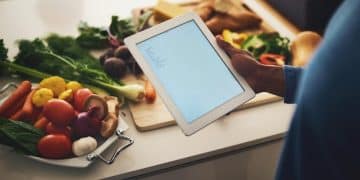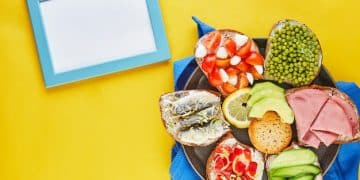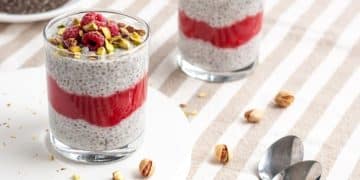Meal Planning for One: Reduce Food Waste & Control Portions in the US
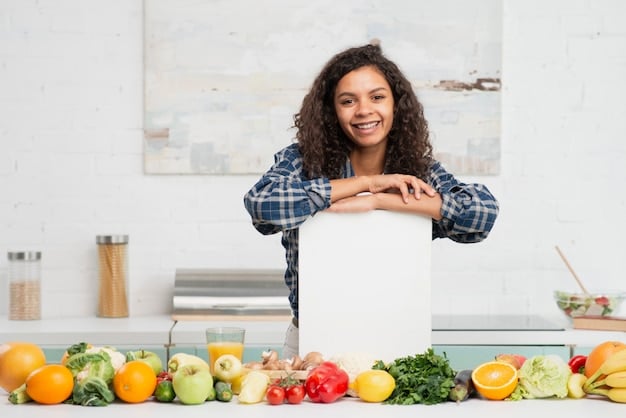
Meal planning for one in the US can significantly reduce food waste and improve portion control by strategically planning meals and snacks to align with individual needs and preferences, avoiding excess purchases and promoting healthier eating habits.
Are you tired of throwing away food and struggling with portion sizes? Meal planning for one: Mastering portion control and reducing food waste in the US, is easier than you think, and it’s the key to a healthier lifestyle and a lighter footprint on the planet.
Why Meal Planning for One is a Game Changer
Meal planning often seems like a task reserved for families or large households. However, meal planning for one offers immense benefits, particularly in a country like the US, where food waste is a significant issue and portion sizes tend to be excessive.
Meal planning for one is not just about preparing meals; it’s about creating a sustainable and enjoyable eating routine that aligns with your individual needs and preferences. It’s about taking control of your health, your wallet, and your environmental impact.
Benefits of Meal Planning for Solos
Discover the myriad advantages of meal planning when you’re flying solo, from saving money to improving your diet.
- Reduced Food Waste: By planning your meals, you only buy what you need, minimizing food spoilage.
- Portion Control: Meal planning helps you manage portion sizes, leading to better weight management and overall health.
- Saves Money: Avoid impulse buys and eating out by having a clear meal plan and grocery list.
- Healthier Eating: You have more control over the ingredients and nutritional content of your meals.
When you eat alone, you tend to not eat as healthy and it is easier to pick up fast food or takeout. With meal planning for one, you can overcome this problem.
Getting Started: Essential Steps for Solo Meal Planning
Diving into meal planning as a single individual may seem daunting, but breaking it down into manageable steps makes the process simple and effective. Here’s a guide to help you get started.
Start with these simple steps, and you will become a meal planning guru in no time:
1. Define Your Goals and Preferences
Understanding your specific needs and tastes is the foundation of successful meal planning. Consider the following:
- Dietary Restrictions: Identify any food allergies, intolerances, or dietary preferences (vegetarian, vegan, gluten-free, etc.).
- Calorie Needs: Determine your daily calorie requirements based on your activity level, age, and health goals.
- Favorite Foods: List your favorite meals and ingredients to ensure you enjoy what you’re eating.
2. Plan Your Meals for the Week
Creating a weekly meal plan is the cornerstone of efficient meal preparation. Use a template or app to outline your meals and snacks for each day.
3. Create a Detailed Shopping List
Once your meal plan is in place, compile a comprehensive shopping list. Organize your list by grocery store sections (produce, meat, dairy, etc.) to save time while shopping. Stick to your list to avoid unnecessary purchases.
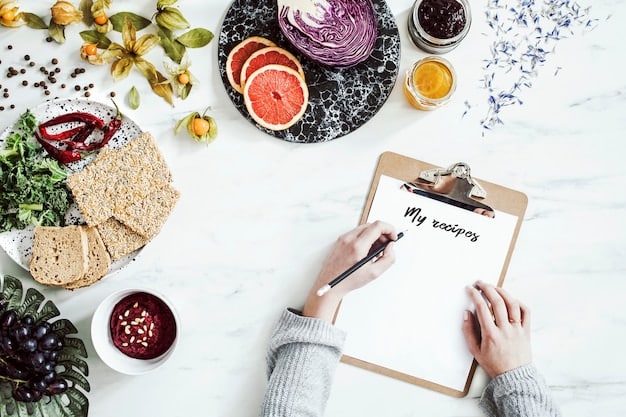
Mastering Portion Control for One
One of the biggest challenges of cooking for one is managing portion sizes. Here’s how to prevent overeating and reduce food waste through effective portion control techniques.
Portion control made easy for your meal planning, you will be able to save money and reduce food waste.
Best Practices for Determining Serving Sizes
- Use Measuring Tools: Invest in measuring cups, spoons, and a food scale to accurately measure ingredients.
- Read Nutrition Labels: Pay attention to serving sizes listed on food packaging to understand the caloric and nutritional content of your meals.
- Pre-portion Meals: Divide your cooked food into individual containers immediately after preparation to avoid overeating later.
Tips for Reducing Food Waste
Reducing food waste is an integral part of mindful meal planning. Implementing these strategies can help you minimize waste and maximize the use of your groceries.
- Store Food Properly: Learn the best ways to store different types of food to prolong their shelf life. For example, store leafy greens in airtight containers with a paper towel to absorb moisture.
- Use Leftovers Creatively: Repurpose leftovers into new dishes. Roasted chicken can become chicken salad, tacos, or soup.
- Freeze Excess Food: Freeze portions of cooked food that you won’t eat within a few days. Soups, stews, and casseroles freeze particularly well.
You should know that reducing food waste helps the environment and your bank account.
Smart Shopping Strategies for Singles
Shopping smart is essential for successful meal planning for one. By employing strategic shopping techniques, you can save money, reduce waste, and ensure you always have the ingredients you need on hand.
Avoid impulse buying and stay healthy by following these shopping strategies for an advantage in meal planning.
Buying in Bulk Wisely
Buying in bulk can sometimes save money, but it’s important to do it wisely to avoid waste.
- Consider Shelf Life: Only buy bulk items that you know you can use before they expire.
- Divide and Freeze: Divide bulk purchases into smaller portions and freeze them for later use.
Shopping at Farmers Markets and Local Stores
Farmers markets and local stores offer fresh, seasonal produce that often comes in smaller quantities, making them ideal for single-person households.
Utilizing Online Grocery Services
Online grocery services can save you time and reduce impulse buys by allowing you to shop from a pre-set list. Look for services that offer smaller portion sizes or single-serving options.
Shopping at farmers markets and local stores will give you fresh, seasonal ingredients and keep you away from all the processed food in big supermarkets.
Simple and Delicious Recipes for One
Meal planning doesn’t have to be complicated or time-consuming. Here are some simple and delicious recipes that are perfect for one person.
When it comes to eating, it is important to know what you like. Try new things and find something you enjoy to make meal planning more interesting.
Quick and Easy Breakfast Ideas
- Overnight Oats: Combine rolled oats, milk (dairy or non-dairy), chia seeds, and your favorite toppings (berries, nuts, seeds) in a jar and refrigerate overnight.
- Scrambled Eggs with Veggies: Sauté your favorite vegetables (spinach, bell peppers, onions) and add scrambled eggs for a protein-packed breakfast.
- Smoothie: Blend fruits, vegetables, yogurt, and protein powder for a quick and nutritious breakfast.
Lunch Options for On-the-Go
- Mason Jar Salad: Layer dressing, grains, vegetables, and protein in a mason jar for a portable and healthy salad.
- Leftover Makeover: Transform dinner leftovers into a flavorful lunch. Roasted vegetables can become a wrap filling, or leftover chicken can be added to a green salad.
Dinner Recipes for One
You can get creative with dinner, try new cuisine and don’t be afraid to mess up. The importants things is that you prepared a healthly meal in a controlled portion.
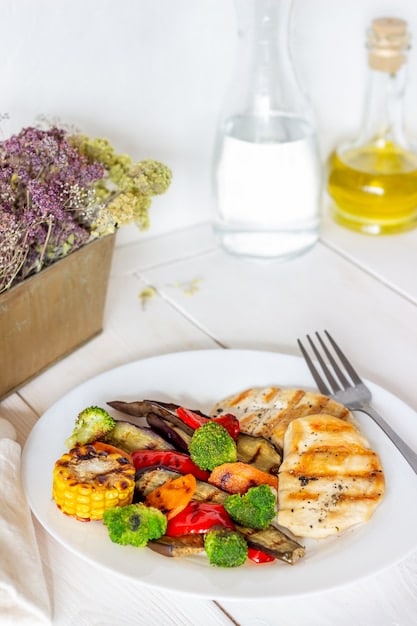
Tech Tools and Apps to Simplify Your Meal Planning
In today’s digital age, numerous tech tools and apps can streamline your meal planning process. These resources can help you create meal plans, track your nutritional intake, and manage your grocery list.
Using technology for meal planning can make the process much more efficient and take less time. Here are some tools you can use:
Top Meal Planning Apps
- Paprika Recipe Manager: A comprehensive app that allows you to import recipes from websites, create meal plans, and generate shopping lists.
- Mealime: This app offers personalized meal plans based on your dietary preferences and automatically creates a shopping list.
- Eat This Much: An app that generates meal plans based on your calorie goals and dietary restrictions.
Online Grocery Shopping Platforms
Utilizing online grocery shopping platforms can save you time and reduce impulse purchases.
- Amazon Fresh: Offers a wide selection of groceries with convenient delivery options.
- Instacart: Allows you to shop from various local grocery stores and have your groceries delivered to your doorstep.
The apps can assist to help create meal plans faster and also keep you on track if you are trying to lose wait. Download an app and find out what works for you.
Overcoming Challenges in Meal Planning for One
While meal planning offers numerous benefits, it also comes with its own set of challenges. Here are some common obstacles and strategies for overcoming them.
Don’t be discouraged when first starting out with meal planning because you will eventually get better and find out what works for you.
Dealing with Motivation and Time Constraints
- Start Small: Begin by planning just a few meals per week and gradually increase as you become more comfortable.
- Batch Cooking: Prepare large batches of food on the weekends and portion them out for the week.
Avoiding Food Boredom
Boredom can derail even the most dedicated meal planners. Here’s how to keep your palate interested.
- Experiment with New Recipes: Try one new recipe each week to add variety to your meal plan.
- Theme Nights: Designate specific nights for different cuisines (e.g., Mexican Monday, Italian Wednesday).
| Key Point | Brief Description |
|---|---|
| 💰 Save Money | Avoid impulse buys and eating out by sticking to your organized meal plan. |
| 🍎 Eat Healthier | Better control over ingredients leads to more nutritious meals. |
| 🗑️ Reduce Food Waste | You buy only what’s needed, so less food goes bad in your fridge. |
| ⏱️ Save Time | Spend less time figuring out what to eat – your meals are already planned! |
Frequently Asked Questions About Meal Planning
▼
Plan your meals carefully, use leftovers creatively, correctly store your food, and freeze any extra portions. Try meal planning for one. It is simpler than you think.
▼
Find recipes that you really enjoy, reward yourself, and check in with your friends. It is important to stay motivated so that you can reach your goals.
▼
Smoothies, overnight oats, green salads with grilled chicken are all great recipes that you can make for one. Experiment with different cuisine.
▼
Use measuring cups, spoons, and food scales to make sure that your portion sizes are accurate and that you are not overeating. Pre portion your meals as soon as you finish cooking.
▼
Absolutely. Mealime, Paprika Recipe Manager and Eat This Much are all great apps to use for meal planning. Download them from you app store and try them out.
Conclusion
Mastering meal planning for one is not just about cooking; it’s about transforming your lifestyle. By embracing strategic planning, smart shopping, and creative cooking, you can enjoy delicious, healthy meals, reduce food waste, and save money. Start today and savor the many benefits of solo meal planning.
